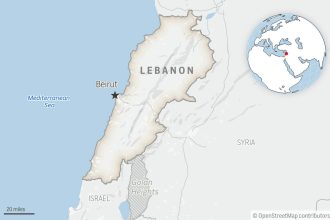The Oklahoma State Fair has been a staple for generations, but there are several notable changes over its 118 years.
At its first event in 1907, the State Fair of Oklahoma saw agriculture as the main attraction. Prizes were given in crop and livestock competitions, farming and ranching had several exhibits and horse racing was a major draw with the Oklahoma Derby.
Over the century-plus time, numerous attractions have risen and fallen on the Oklahoma City Fairgrounds, from tall features like the Atoms Space Tower, coming down in 2018, to the oldest of structures like the Goodholm Mansion.
Only some features have been rebooted, like the Planetarium, which returned last year. Others, however, have continued to live on in our photos of yesteryear.
Here are four attractions that we miss from the State Fair.
The Space Tower
Whether you call it the Space Tower or the Space Needle, the Atoms Space Tower was an integral part of the Oklahoma City skyline, standing 330-feet tall.
The tower was built in 1957 and then modified to become a ride just over 10 years later. With the ride, guests could go to the top of the tower and see Oklahoma City in all directions.
The tower was closed in 2010, after being damaged by flooding, but remained upright until 2018, after 50 years as part of the state fair’s footprint.
Related: See the reasons why the City opted to fell the tower in 2018.
Monorail
In 1964, the State Fair of Oklahoma set out to build a 6,300-foot monorail with hopes of being the “longest in the Western Hemisphere.” Adding to the buzz surrounding that year, the monorail would travel 22 to 25 feet above fairgoers’ heads.
The train connected the grandstands in the north to the 4-H and FFA buildings in the south.
In its opening year, riders could jump on for 75 cents, or 59 if you could get the discount, and it was described as “the undisputed top attraction at the State Fair of Oklahoma.”
However, the monorail’s final ride came in 2005 when the state fair announced it planned to remove the structure to make way for new attractions to the fairgrounds.
Spirit of ‘76 Arch
While many of the structures from past state fairs have been intentionally removed, a 2017 storm brought down the Spirit of ‘76 Arch.
The arch resembled the Gateway Arch in St. Louis and was erected to celebrate the nation’s 200th anniversary.
The Goodholm Mansion was located at the state fairgrounds from 1978 until 2008 and is shown in this 1980 photo in the foreground of the Bicentennial arch. That arch was blown over by a storm in 2017 and not restored.
Stretched across the curve of the arch read “When in the Course of human events,” which are the first words of the nation’s Declaration of Independence.
The 2017 storm that brought down the arch also destroyed several buildings, power lines, churches and more, either destroyed or drastically damaged.
All Sports Stadium
Before the Paycom Center or Chickasaw Bricktown Ballpark, there was the All Sports Stadium, which helped bring major games to the Sooner state.
Though the title may lead you to believe it was a multipurpose field, the stadium was “built for one sport and one team: baseball and the Oklahoma City 89ers” as the Daily Oklahoman wrote in 1997.
When the stadium opened its doors in 1962, it debuted the baseball team to the American Association and Oklahoma City was officially a sports town, and nowhere else than on the grounds of the State Fair.
Named for the Land Rush of 1889, the team moved in 1998 to Chickasaw after the Bricktown Ballpark was torn down in 2005, which caused much the uproar from readers.
This article originally appeared on Oklahoman: Here’s 4 Oklahoma State Fair attractions we’ll never forget









